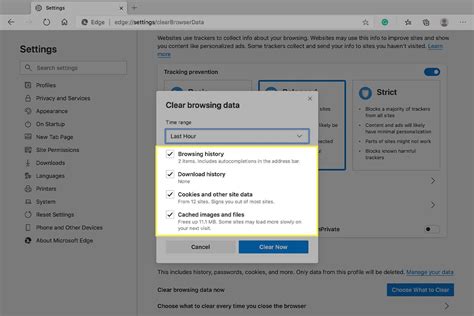Mailserve
Author: s | 2025-04-24

visnetic mailserver 8 руссификация visnetic mailserver 8.3.5 mail access monitor for kerio mailserver argosoft mailserver バージョンアップ download kerio mailserver 5.6.5 kerio mailserver english kerio mailserver administration kerio mailserver migration kerio mailserver 和 kerio connect kerio

MailServe Webmail :: Welcome to MailServe Webmail
That will always update the DNS Server with that client's current IP address. If you leave the DNS Enabler application on in the server, you can see the IP address updates appearing automatically, but a few minutes late (say, 10 minutes later). Why so late? This is because the updates are cached by the server but not written to disk straightaway, in case a lot of updates come in at the same time. But they're registered immediately by the server, and you can check that it's true if you do a dig on the server in Terminal. The zone files are batch-updated later. When they do get updated, you'll see that reflected on the DNS Enabler interface immediately. Dynamic DNS Update of DKIM Keys If you’ve set up your mail server using MailServe for Sequoia and you’re running DKIM, you can get MailServe to auto-update the DNS Server whenever the mail server’s DKIM key changes. MailServe simply acts as a dynamic DNS update agent, like DNS Agent. All you need to make this work is to copy the Authorisation Key from DNS Enabler into the key well that is accessible from MailServe’s DKIM dialog box. Bonjour Wide-Area Services The Bonjour panel allows DNS Enabler to be used as a configurator for Bonjour services, to enable wide-area discovery of Bonjour devices : More information about the types of Bonjour services you can currently configure, and what you need to enter into the individual columns in the Bonjour panel, can be found at : e.g., DNS SRV (RFC 2782) Service Types. What DNS Enabler saves the user is the need to know the specific syntax to set up SRV and TXT records at the DNS server. All he needs to know is the Bonjour service type, e.g., _http._tcp for publicising web pages (that may be served even from local private networks - you can use the Port number field to publicise a different port other than 80 and port-map that incoming request to a specific local machine) and the domain that will serve that request. The service name is a label that
GitHub - docker-mailserver/docker-mailserver:
The mail server. The DKIM record is created by the mail server (like my MailServe app) and stored in its associated DNS Server. This is how you would enter a DKIM record into DNS Enabler : You can double-click on a DKIM record line to open a dialog box where you can see or paste in the whole DKIM record (which is the value between the “TXT[" and the closing “]”) : Once you’ve entered the DKIM record, Restart DNS Server. It may take time for this new TXT record to propagate thorugh the Domain name System, so set a short (TTL) value before you restart the DNS Server. IP Addresses in CIDR Format DNS Enabler allows you to enter IP addresses in CIDR format, e.g. if your ISP has delegated control of a sub-block (or two) of addresses to your name server and you need to create reverse pointer records in CIDR format so that when other mail servers do a reverse name lookup on your IP addresses, your name server will return the correct answers. The picture below shows how CIDR-type addresses can be entered : DNS Enabler can handle the general case where more than one block of IP addresses in the same sub-net can possibly be delegated to your name server. This is how DNS Enabler will create the reverse pointer records : A reverse lookup on the IP address 12.53.154.35 will go first to the root servers which then pass the query on to the ISP name server that is known to control the address range that 12.53.154.35 sits in. Having delegated a sub-block from of IP addresses (from 12.53.154.32 to 12.53.154.39 to you (which is what 12.53.154.32/29 really means), the ISP will re-direct that query on to your name server, whose job is to say which host name was mapped to that particular position 35. In this case, your name server's answer would be "smtp.domainName.com". A normal lookup of the name "smtp.domainName.com" will still work correctly as DNS Enabler would have created the name-to-IP address mappings as usual : So with things set upElectrotherm - MailServe Webmail :: Welcome to MailServe
. visnetic mailserver 8 руссификация visnetic mailserver 8.3.5 mail access monitor for kerio mailserver argosoft mailserver バージョンアップ download kerio mailserver 5.6.5 kerio mailserver english kerio mailserver administration kerio mailserver migration kerio mailserver 和 kerio connect kerio Download do Kerio MailServer [PT] T l charger Kerio MailServer [FR] Download Kerio MailServer [NL] Ladda ner Kerio MailServer [SV] Kerio MailServer 다운로드 [KO] Скачать Kerio MailServer [RU] Scarica Kerio MailServer [IT] Kerio MailServer indir [TR] ดาวน์โหลด Kerio MailServer [TH] Pobierz Kerio MailServer [PL]GitHub - mailserv/mailserv: OpenBSD mail server
GitHub - docker-mailserver/docker-mailserver: Production
GitHub - docker-mailserver/docker-mailserver: Production-ready
. visnetic mailserver 8 руссификация visnetic mailserver 8.3.5 mail access monitor for kerio mailserver argosoft mailserver バージョンアップ download kerio mailserver 5.6.5 kerio mailserver english kerio mailserver administration kerio mailserver migration kerio mailserver 和 kerio connect kerioComments
That will always update the DNS Server with that client's current IP address. If you leave the DNS Enabler application on in the server, you can see the IP address updates appearing automatically, but a few minutes late (say, 10 minutes later). Why so late? This is because the updates are cached by the server but not written to disk straightaway, in case a lot of updates come in at the same time. But they're registered immediately by the server, and you can check that it's true if you do a dig on the server in Terminal. The zone files are batch-updated later. When they do get updated, you'll see that reflected on the DNS Enabler interface immediately. Dynamic DNS Update of DKIM Keys If you’ve set up your mail server using MailServe for Sequoia and you’re running DKIM, you can get MailServe to auto-update the DNS Server whenever the mail server’s DKIM key changes. MailServe simply acts as a dynamic DNS update agent, like DNS Agent. All you need to make this work is to copy the Authorisation Key from DNS Enabler into the key well that is accessible from MailServe’s DKIM dialog box. Bonjour Wide-Area Services The Bonjour panel allows DNS Enabler to be used as a configurator for Bonjour services, to enable wide-area discovery of Bonjour devices : More information about the types of Bonjour services you can currently configure, and what you need to enter into the individual columns in the Bonjour panel, can be found at : e.g., DNS SRV (RFC 2782) Service Types. What DNS Enabler saves the user is the need to know the specific syntax to set up SRV and TXT records at the DNS server. All he needs to know is the Bonjour service type, e.g., _http._tcp for publicising web pages (that may be served even from local private networks - you can use the Port number field to publicise a different port other than 80 and port-map that incoming request to a specific local machine) and the domain that will serve that request. The service name is a label that
2025-04-22The mail server. The DKIM record is created by the mail server (like my MailServe app) and stored in its associated DNS Server. This is how you would enter a DKIM record into DNS Enabler : You can double-click on a DKIM record line to open a dialog box where you can see or paste in the whole DKIM record (which is the value between the “TXT[" and the closing “]”) : Once you’ve entered the DKIM record, Restart DNS Server. It may take time for this new TXT record to propagate thorugh the Domain name System, so set a short (TTL) value before you restart the DNS Server. IP Addresses in CIDR Format DNS Enabler allows you to enter IP addresses in CIDR format, e.g. if your ISP has delegated control of a sub-block (or two) of addresses to your name server and you need to create reverse pointer records in CIDR format so that when other mail servers do a reverse name lookup on your IP addresses, your name server will return the correct answers. The picture below shows how CIDR-type addresses can be entered : DNS Enabler can handle the general case where more than one block of IP addresses in the same sub-net can possibly be delegated to your name server. This is how DNS Enabler will create the reverse pointer records : A reverse lookup on the IP address 12.53.154.35 will go first to the root servers which then pass the query on to the ISP name server that is known to control the address range that 12.53.154.35 sits in. Having delegated a sub-block from of IP addresses (from 12.53.154.32 to 12.53.154.39 to you (which is what 12.53.154.32/29 really means), the ISP will re-direct that query on to your name server, whose job is to say which host name was mapped to that particular position 35. In this case, your name server's answer would be "smtp.domainName.com". A normal lookup of the name "smtp.domainName.com" will still work correctly as DNS Enabler would have created the name-to-IP address mappings as usual : So with things set up
2025-04-12